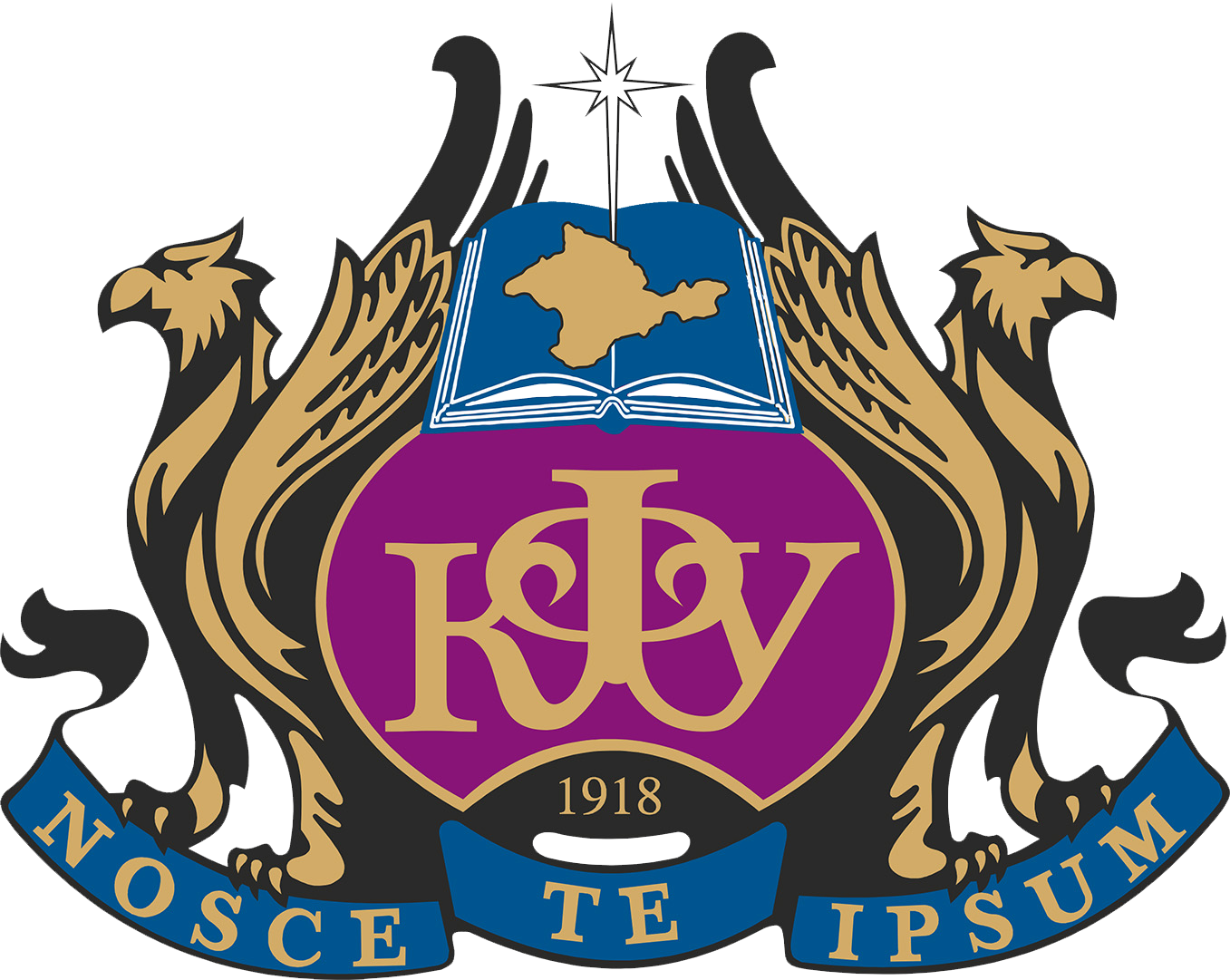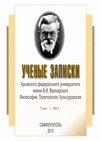To compare humans and artificial intelligence, a fourth spatial axis has been introduced -the intensiveness axis, or depth axis, movement along which means a change in the scale of the objects under consideration, for example, the transition from the level of molecules and atoms (substance) to the level of subatomic particles (field). To display the levels of depth of an object, the method of diaeresis (i.e. repeated division into two in the same manner) is used, carried out by distinguishing the intensive and extensive aspects of the object. The diaeresis scheme, in the primary perspective of its consideration, displays the intensive (mental) and extensive (corporeal) aspects of a human along the primary intensiveness axis, and in the secondary (orthogonal) perspective — the intensive (mental) and extensive (corporeal) levels ofa human along the secondary intensiveness axis. From the idealist perspective, a human has four levels of depth along the intensiveness axis. Two intensive levels are that what thinks: 1. The intensively-intensive level (11) is the mind (Nous) as the highest part of the soul; the faculty of the mind is noesis, i.e. synchronous, immediate intuitive apprehension of the eidetic. 2. The extensively-intensive level (10) is the soul as a mixture of the natures of the mental and the material with essence; the faculty of the soul is dianoia, i.e. reasoning, diachronic, discursive thinking. Two extensive levels are that by which thought becomes conscious to a human at his corporeal level. 3. The intensively-extensive level (01) is the field, quantum component of the human brain; the method of processing information at this level is synchronous, based on quantum processes, including through quantum coherence. 4. The extensively-extensive level (00) is the substantial, neural component of the brain; the method ofprocessing information is diachronic, based on neural processes, including through neural synchronization. This means that a human is “deep” along the intensiveness axis. Artificial “intelligence” does not have intensive levels, i.e. mind (11) and soul (10). Although AI has a field level (01), no information processing occurs at it. Neural synchronization does not occur in AI; it does not process information synchronously, instantly. “Traditional” AI processes information only in a diachronic, algorithmic way, at the substantial, extensively-extensive level (00), i.e. on a silicon basis. This means that AI is “flat” along the intensiveness axis, and a human, even if understood materialistically, as two corporeal levels (field and substantial), is “deeper” than AI. Three strategies for “deepening” “flat” AI can be distinguished, but each of them is difficult to implement or ineffective: 1. Development of new algorithms and silicon-based AI architectures: cannot lead to “deepening” of AI due to the preservation of the non-biological basis of AI. 2. Development of biohybrid AI: associated with many ethical and legal risks. 3. Combination of strategies 1 and 2: requires fundamental multidisciplinary research, inherits all the problems and risks of developing biohybrid AI systems.
diaeresis, intensive, extensive, hierarchy, depth, noesis, dianoia, quantum coherence, neural synchronization
1. The Geometry of Reny Descartes / Transl. from the French and Latin by D.E. Smith and M.I. Latham with a Facsimile of the First Edition, 1637. – Chicago, London:The Open Court Publishing Company,1925.– 246 p.
2. Descartes R. Objections of some learned men against the above-stated “Meditations” with the author’s responses [Vozrazheniya nekotoryh uchenyh muzhey protiv izlozhennyh vyshe «Razmyshleniy» s otvetami
3. Izotov A.D., Mavrikidi F.I. Fractals: divisibility of Matter as a Degree of Freedom in Materials Science [Fraktaly: delimost' veschestva kak stepen' svobody v materialovedenii]
4. Yoga Sutras of Patanjali. Commentary [Yoga-sutra Patandzhali. Kommentarii]. – Minsk: Vedantamala Publishing House, 2006. – 388 p. – ISBN 987-3517-03-0.
5. Hclder O. Die Axiome der Quantitdt und die Lehre vom MaYa / Otto Hclder // Berichte 'ber die Verhandlungen der kcniglich sdchsischen Gesellschaft der Wissenschaften zu Leipzig mathematisch-physische Classe.
6. Plato. Republic [Gosudarstvo] // Collected works in 4 vol. Vol. 3 / Transl. from ancient Greek; General eds. A.F. Losev, V.F. Asmus, A.A. Takho-Godi; Introductory article and articles in Notes by A.F. Losev; Notes by
7. Plato. Timaeus [Timey] // Collected works in 4 vol. Vol. 3 / Transl. from ancient Greek; General eds. A.F. Losev, V.F. Asmus, A.A. Takho-Godi; Introductory article and articles in Notes by A.F. Losev; Notes by
8. A Greek-English Lexicon / Comp. by Henry George Liddell and Robert Scott. – Oxford: Clarendon Press, 1996. – 2042 p. – ISBN 0 19-864226-1.
9. Plato. Sophist [Sofist] // Collected works in 4 vol. Vol. 2 / General eds A.F. Losev, V.F. Asmus, A.A. Takho-Godi; Notes by A.F. Losev and A.A. Takho-Godi; Transl. from ancient Greek. – Moscow: Mysl’, 1993.
10. Bohm D. Wholeness and the Implicate Order. – Taylor & Francis e-Library, 2005. – 284 p. – ISBN 0-203-99515-5.
11. Hamero湉 S., Penrose R. Consciousness in the universe: A review of the ‘Orch OR’ theory / Stuart Hamero湉, Roger Penrose // Physics of Life Reviews. – 2014. – Vol. 11, Issue 1. – P. 39–78.
12. Salari V., et al. Imaging Ultraweak Photon Emission from Living and Dead Mice and from Plants under Stress /V. Salari, et al. // The Journal of Physical Chemistry Letters. – 2025. – Vol. 16, Issue 17.– P. 4354–4362.
13. Pribram K. Languages of the Brain: Experimental Paradoxes and Principles in Neuropsychology [Yazyki mozga. Eksperimental'nye paradoksy i principy neyropsihologii] / Transl. from English by
14. Mayburov S.N. Photonic Communications in Biological Systems / Sergey N. Mayburov // Vestnik of Samara State Technical University. Series “Physical and Mathematical Sciences”. – 2011. – Issue 2
15. Popp F.-A., Gu Q., Li K.-H. Biophoton Emission: Experimental Background and Theoretical Approaches / F.-A. Popp, Q. Gu, K.-H. Li // Modern Physics Letters B. – 1994. – Vol. 8, Issue 21–22. – P. 1269–1296.
16. Fries P. A Mechanism for Cognitive Dynamics: Neuronal Communication through Neuronal Coherence / Pascal Fries // Trends in Cognitive Sciences. – 2005. – Vol. 9, Issue 10. – P. 474–480. – ISSN 1364-6613.
17. Fries P. Rhythms for Cognition: Communication through Coherence / Pascal Fries // Neuron. – 2015. – Vol. 88, Issue 1. – P. 220–235.
18. Kastrup B., Ilyin M.V., Fomin I.V. Bernardo Kastrup: I Would Argue with Descartes – Dualities Drive the Universe, but There Is No Need for Metaphysical Dualism of Substances [Ya by posporil s
19. Kastrup B. A Paradigm-Breaking Hypothesis for Solving the Mind-Body Problem / Bernardo Kastrup // Paranthropology: Journal of Anthropological Approaches to the Paranormal. – Vol. 3, № 3. – P. 4–12.
20. Lavrenkov Yu.N., Tsygankov I.S. Synchronization of a population of neurons using a neural network stochastic disturbance generator [Sinhronizaciya populyacii neyronov s primeneniem neyrosetevogo
21. Lanting T., et al. Entanglement in a Quantum Annealing Processor / T. Lanting, et al. // Physical Review. – 2014. – Vol. 4, Issue 2. – P. 021–041.
22. Cortical Labs O戠cial website: – URL: https://corticallabs.com/ (data obrascheniya: 09.06.2025).





